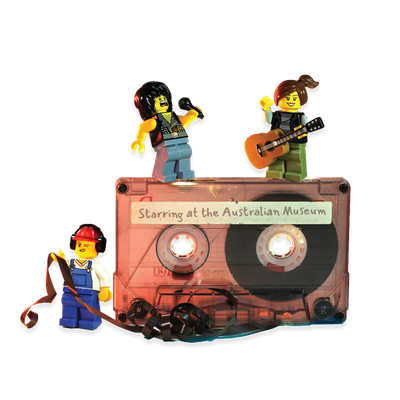Your search returned 38 results
By Page Type
By Tag
- All
- fish (966)
- blog (698)
- fishes of sydney harbour (400)
- First Nations (293)
- Blog (236)
- AMRI (169)
- archives (165)
- Aboriginal and Torres Strait Islander (135)
- Eureka Prizes (131)
- insect (126)
- Ichthyology (125)
- geoscience (109)
- minerals (102)
- climate change (98)
- podcast (94)
- Fish (91)
- Anthropology (89)
- International collections (80)
- Minerals Gallery (78)
- wildlife of sydney (78)
- Labridae (77)
- frog (73)
- gemstone (70)
- history (63)
- photography (63)
- staff (61)
- Mollusca (60)
- gem (59)
- Birds (58)
- education (57)
- Gems (56)
- Indonesia (56)
- AMplify (54)
- shark (54)
- people (53)
- exhibition (52)
- earth sciences (50)
- past exhibitions (50)
- Gobiidae (48)
- Pomacentridae (45)
- sustainability (45)
- Serranidae (44)
- science (43)
- lifelong learning (42)
- Earth and Environmental Science (41)
- Syngnathidae (41)
- Ancient Egypt (40)
- Bali (40)
- bird (40)
- dangerous australians (40)
-
Concretions, Thunder Eggs and Geodes
https://australian.museum/learn/minerals/shaping-earth/concretions-thunder-eggs-and-geodes/Concretions are compact, often rounded, accumulations of mineral matter that form inside sedimentary rocks such as shale and sandstone or in soil.
-
Limestone caves
https://australian.museum/learn/minerals/shaping-earth/limestone-caves/Caves form in limestone (calcium carbonate), and occasionally in dolomite (calcium magnesium carbonate), when water containing dissolved carbon dioxide (carbonic acid) seeps into rock crevices and joints.
-
Structure of volcanoes
https://australian.museum/learn/minerals/shaping-earth/structure-of-volcanoes/Although volcanoes are often seen as being destructive they are also constructive. They add more land to the surface of the Earth and, when weathered, provide us with a nutrient-rich soil for agriculture.
-
Igneous intrusions
https://australian.museum/learn/minerals/shaping-earth/igneous-intrusions/Molten magma can invade the Earth's upper layers and then solidify as igneous intrusions.
-
Plate Tectonics
https://australian.museum/learn/minerals/shaping-earth/plate-tectonic-processes/Since the 1950s, several discoveries have led to a new understanding of how the Earth works.
-
The universe
https://australian.museum/learn/minerals/shaping-earth/the-universe/The universe can be defined as the whole of existing things from the scale of sub-micron to outer space.
-
Looking inside the Earth
https://australian.museum/learn/minerals/shaping-earth/looking-inside-the-earth/The internal structure of the Earth consists of three main parts, the crust, mantle and core. The division between the crust and the mantle is called the Moho.
-
The Sydney Basin
https://australian.museum/learn/minerals/shaping-earth/the-sydney-basin/The Sydney Basin is a major structural basin containing a thick Permian-Triassic (290 Ma - 200 Ma (million years old)) sedimentary sequence that is part of the much larger Sydney-Gunnedah-Bowen Basin.
-
Pyroclastic processes and materials
https://australian.museum/learn/dinosaurs/pyroclastic-processes-and-materials/Pyroclastic means 'fire broken' and is the term for rocks formed from fragments produced by volcanic explosions.
-
Glossary of geoscience terms
https://australian.museum/learn/minerals/shaping-earth/glossary-geoscience-terms/Geoscience (also known as earth sciences and geology) is the study of the Earth and includes all non-living parts of our environment, and everything below the Earth's surface. Here are some common geoscience terms explained.
-
Find out more
Tails from the Coasts
Special exhibition
On now![]()
-
Find out more
Burra
Permanent kids learning space
10am - 4.30pm![]()
-
Discover more
RELICS
Special Exhibition
Opens 16 August 2025![]()
-
Discover more
Minerals
Permanent exhibition
Open daily![]()





